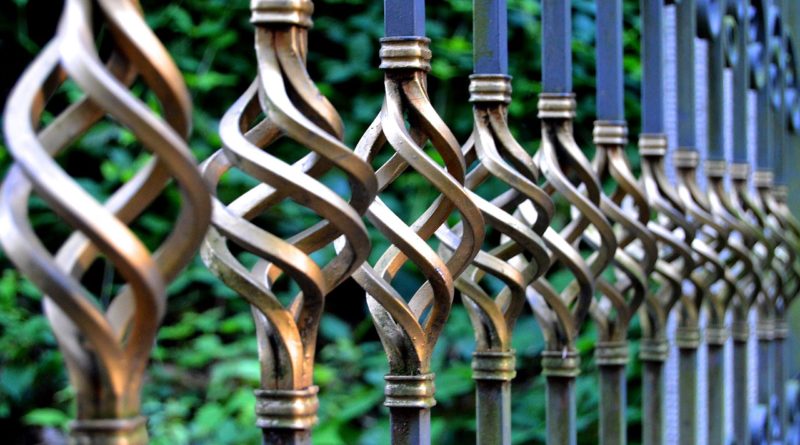Iron Fence: The Ultimate Maintenance Guide
Iron fences are among the most popular fence options for homeowners and around the world, owing to their upscale aesthetic appeal, durability and resilience to the elements as well as their robust structure that allows them to maintain their integrity for decades, if not centuries.
However, they do have one weakness; they are prone to accumulating rust. If you allow your iron fence to become rusty, failing to adhere to proper and regular maintenance, what was once a beautiful piece of craftsmanship will become an eyesore. Even a little bit of rust can significantly decrease the quality and durability of your fence, not to mention its aesthetic appeal. Here is how you can maintain and restore your iron fence to its former glory.
Prepare the area
Firstly, you want to prep the fence area for maintenance and repairs by removing any leaves, vines and debris that might be growing around and on the fence. Don’t forget to remove dirt or mud residue before continuing.
In order to protect the surrounding grass, plant life and pavement from hazardous materials; be sure to cover the surrounding area with tarps, old bed sheets or even newspaper. Finally, you want to wear the necessary protective gear such as rubber gloves and face masks.
Remove the rust
Depending on the severity of the rust-infected areas, the process will entail a number of steps. First, you need to use a wire brush to scrape the rust from the surface. You should have no problems removing the flaking layers of rust, yet if the problem goes deeper into the metal, you’ll need coarse sandpaper at first, and you will need to finish the job with a medium sandpaper once you’ve removed the majority of the rust.
For a complete polish, you will need steel wool, rubber gloves, a damp cloth, and paraffin. You can find all of these materials at your local hardware store. Be sure to wear the gloves and mask at all times, sand the rust some more with steel wool until you have restored the metal close to its former state. You can then proceed to put a drop of paraffin on the wool and continue to scrub the surface until the rust has disappeared. Take the damp cloth and clean the sanded areas.
Apply primer and rust converter
For areas where rust cannot be removed, or where there are too many irregularities, you’d be best advised to use an anti-rust paint solution in order to stop further corrosion and provide a suitable surface for subsequent priming and painting.
After you’ve applied the rust converter, you can apply a coat of primer that is oil-based and designed for metal applications. It’s easiest to use a spray-on primer, as it is able to reach the crevices of ornamental details unlike its brush-on counterparts. Leave the primer to dry completely.
Finishing touches
Finally, you want to use an oil-based coat of finish to restore the colour and vibrancy of your fence. Be sure to use the same or a similar hue to the fence’s original colour, or contact the manufacturer to inquire about the availability of touch-up paint.
Proper maintenance
Proper maintenance is essential in prolonging the lifespan of your fence, and the first thing you should do is clean the fence with soap and lukewarm water every six months. Be sure to apply a layer of metal-grade wax to the surface in order to protect it from sprinklers, vegetation and the elements.
Next, you want to replace any corroded, missing or worn out fence hardware such as fasteners and handles with similar pieces to avoid further corrosion and structure problems. Finally, be sure to grease the hinges if needed, preferably once a year with a general-grade lubricant.
Iron fences, however beautiful and strong, are certainly not without their weaknesses. Much like anything good in life, a fence requires proper maintenance and care in order to serve its purpose and enjoy a long and healthy lifespan. Be sure to follow these essential guidelines to restore your iron fence to its former glory.




